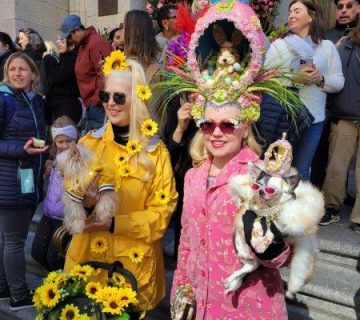The New York Transit Museum Bus Festival is an annual event that celebrates the history and culture of New York City’s surface transit system. Held in Brooklyn Bridge Park, the festival features buses that have been part of NYC’s bus fleet over the last 90 years that are available for visitors to learn about, experience and walk through. I loved the walk down memory lane with buses that have been a part of New York City’s history and landscape, and especially for the original ads that they still have in them, all set against the backdrop of Brooklyn Bridge.
It was amazing to see people of all ages, especially the kids, utterly fascinated by the buses on display, and to experience the history of New York City’s transit system in a fun and engaging way.
Table of Contents
New York Transit Museum Bus Festival
The New York Transit Museum Bus Festival is an annual event in New York City that offers a window into vintage buses and their evolution over the years. Organized by the New York Transit Museum, which is dedicated to preserving the history of mass transportation in the city, it is a great complement to their vintage subway trains on display at their subway stop that is now a Transit Museum in Downtown Brooklyn.
The New York Transit Museum Bus Festival is typically held in June at the Brooklyn Bridge Park with stunning views of the Brooklyn Bridge and Manhattan skyline. It is easily accessible by public transportation, and admission is free.
The festival offers a variety of vintage buses from the museum’s collection, and educational activities and entertainment such as a treasure hunt, as well as pop-up shops with lots of transit souvenirs for sale.
Vintage buses on display
In 2023, the festival showcased a variety of vintage buses from the museum’s collection, including:
Bus 1263 from 1931
Bus 1263 is the oldest bus in the Transit Museum’s fleet, and was part of Fifth Avenue Coach’s 1200 series. As the only double decker bus at the festival, it was in high demand with long lines to experience it from the inside. Dating back to 1931, Bus No. 1263 remained in Manhattan passenger service until 1947.
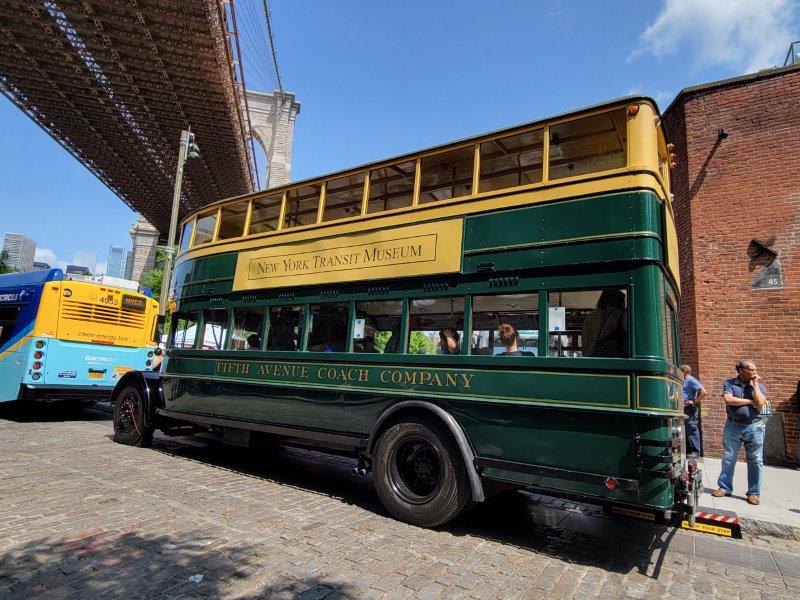
Bus 2969 from 1948
Bus Number 2969 dates back to 1948, and is one of the first 40-foot transit buses designed specifically for New York City. With a double-width front door to expedite passenger loading and unloading, it is known as the “Jackie Gleason Bus.” Interestingly it was originally numbered 4789, but the number was changed to match the bus number Jackie Gleason was photographed in as Ralph Kramden in the classic television series “The Honeymooners.”
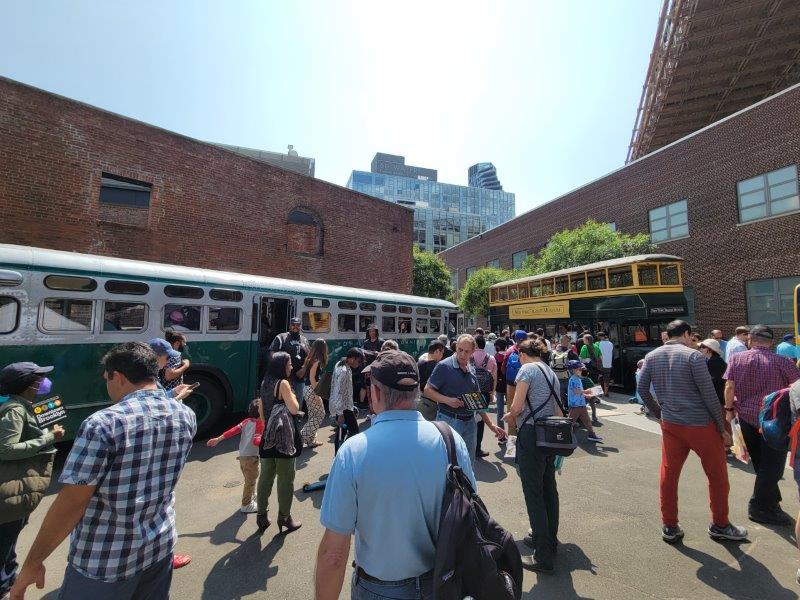
I really appreciated this ad that was in Bus 2969, which is as relevant today.
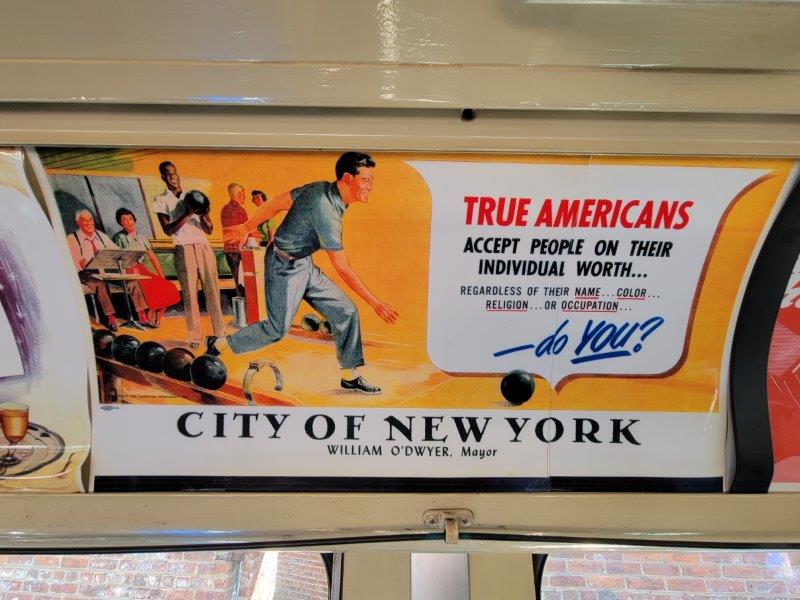
Bus 3100 from 1956
We take air conditioned buses for granted, so it was interesting to walk through Bus 3100, which was the first air conditioned bus in the US dating back to 1956 which featured a push type rear exit door. Bus 3100 operated on Fifth Avenue and M4 & M5 routes in Manhattan between 1958 and 1968. After two decades of taking passangers around NYC, this vehicle served the Transit Police before being retired in the mid 1970s.
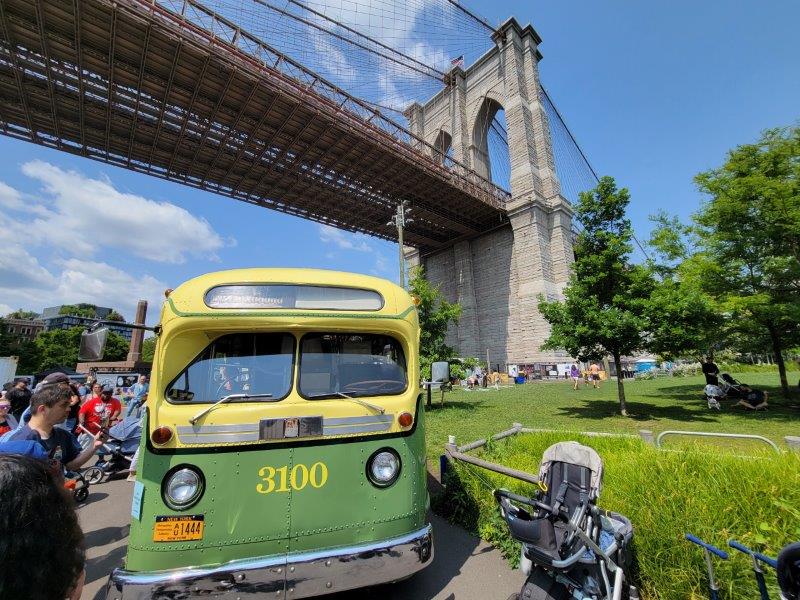
As a sign of the times, check out this ad promoting filter cigarettes in the bus, and another commenting that women prefer men in hats!
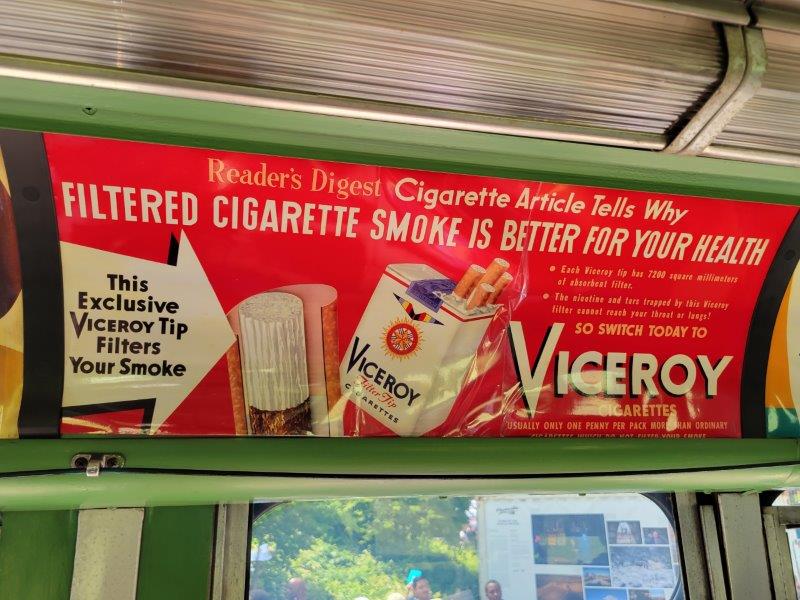

Bus 9098 from 1958
Bus 9098 from 1958 was the first bus to sport a two-tone green exterior with a contrasting stripe. It was also the first type of bus in NYC that featured sliding windows, fiberglass seats, and rear door safety exits. Bus 9098 operated in Brooklyn and Staten Island for 10 years. The bus fare when this bus was introduced was 15 cents.

Bus 100 from 1959
Bus 100 was among a group of 190 buses that introduced a ‘New Look’ design to city buses. This featured a large bubble-shaped windshield, single-piece destination sign, and parallelogram windows. This was replaced by a boxier ‘Advanced Design’ style after 20 years.
I loved that this is the 42nd Street crosstown bus, which is a bus that I take often in Manhattan.
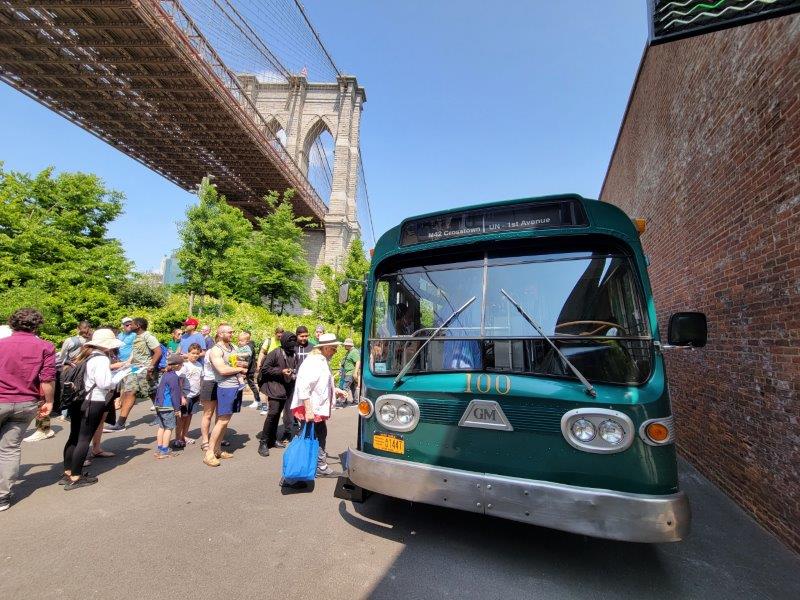
Bus 4727 from 1969
Bus 4727 was in service from 1969 through 1987, and operated in the hilly streets of the Bronx which are challenging for bus operators.

Bus 5227 from 1971
Bus 5227 was in service in 1971, and in 1984-85 was part of 350 buses that were sent to the Blitz Corporation of Chicago for an overhaul. They were renumbered to the 5000s when they came back, and were now known as Blitz Buses. Bus 5227 was the last bus that was not equipped with a wheelchair lift.
I really liked this ad that was still up in the bus, especially since I belong to the settler category, and I am very passionate about New York.

Bus 3865 from 1993
Bus 3865 was operated by three different companies during its life span thanks to transfers and company takeovers. Originally delivered to Queens Surface Corporation for service on its routes out of what is now MTA Bus Company’s College Point Depot, in May 2000 it was one of 12 buses transferred to Jamaica Buses Inc, and then to the MTA Bus Company in 2006. It was in service through 2010.
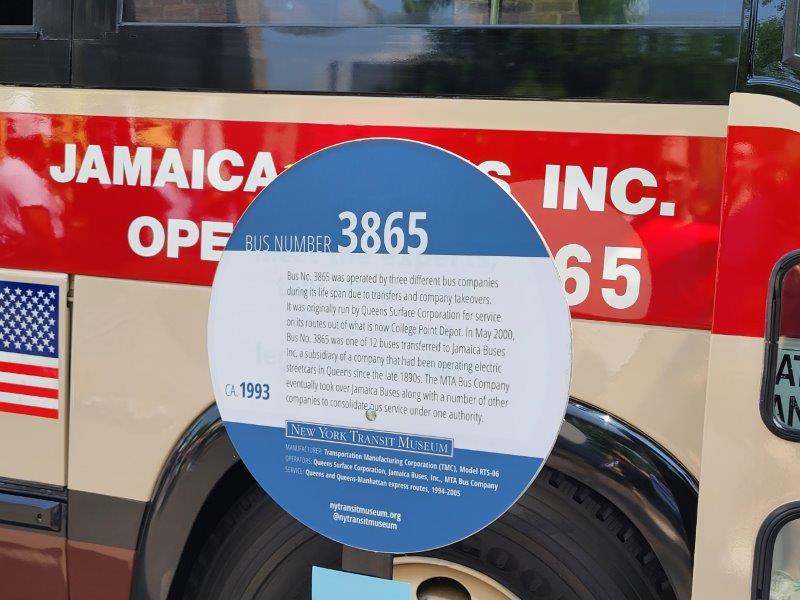
Frequently Asked Questions
What is the date of the New York Transit Museum Bus Festival?
The New York Transit Museum Bus Festival is an annual event that is usually held on a Saturday in June. In 2023, it was on June 10, 2023.
Where is the Bus Festival located?
The Bus Festival is held at the Emily Warren Roebling Plaza, located at the intersection of State Street and Cadman Plaza East in Brooklyn, New York.
What time does the Bus Festival start?
The Bus Festival starts at 10:00 a.m. and ends at 4:00 p.m.
What types of buses are featured at the Bus Festival?
The Bus Festival features vintage buses from the New York City Transit Museum’s collection, representing more than 90 years of New York City surface transit history. Visitors can walk through these historic buses, some of which have been restored to their original condition.
Is there a fee to attend the Bus Festival?
No, the Bus Festival is free and open to the public.
Is the New York Transit Museum Bus Festival free?
Yes, admission to the New York Transit Museum Bus Festival is free. However, visitors should expect to pay for food and drinks, as well as any souvenirs they wish to purchase.



